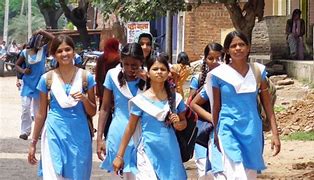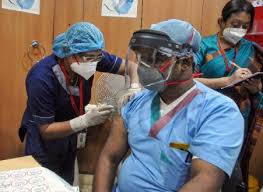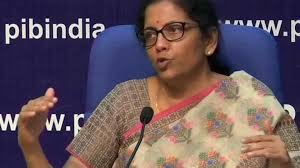Feature
RTC buses remain off roads in Telangana, Andhra

Hyderabad: State-owned buses remained off the roads in Telangana and Andhra Pradesh for a second consecutive day on Thursday as over one lakh employees continued their indefinite strike, demanding pay revision.
Ignoring the threat by Andhra Pradesh State Road Transport Corporation (APSRTC) to use Essential Services Maintenance Act (ESMA), 120,000 employees stayed away from duty.
With nearly 20,000 buses confined to depots, the public road transport service remained pralaysed in both the states, affecting 1.5 crore people.
The attempts by APSRTC management to use the services of contract workers to operate buses met with stiff resistance by the striking employees, leading to tension in some places.
The employees’ unions have called for rallies and sit-ins to protest what they call indifferent attitude of the management towards their demand for 43 percent hike in salaries.
Tension prevailed in Hanamkonda town of Warangal district when police stopped employees from taking out a rally. There was a scuffle between policemen and striking workers.
Prohibitory orders have been imposed at all bus stations and depots to prevent protests by the employees.
The management has warned that it will invoke ESMA if the employees failed to return to duties on Thursday
In Andhra Pradesh, a total of 10,576 were off the roads while in Telangana 9,370 buses were confined to depots.
Students, office goers, holidayers, people attending marriages and pilgrims in Tirupati were hit hard by the strike.
The strike is likely to hit hard the students attending EAMCET in Andhra Pradesh on Friday. More than 2.5 lakh students are to appear for the entrance test for admissions into medical and engineering colleges.
The employees are demanding pay revision at par with the other government employees in the two states.
The APSRTC management has turned down the demand citing poor financial condition of the organisation. It has offered 27 percent hike.
APSRTC managing director N. Sambasiva Rao said the hike will put a burden of Rs.2,800 crore on the organisation, which suffered a loss of Rs.950 crore during 2014-15.
Entertainment
Meghalaya Reserves Legalized Gambling and Sports Betting for Tourists

The State Scores Extra High on Gaming-Friendly Industry Index
Meghalaya scored 92.85 out of 100 possible points in a Gaming Industry Index and proved to be India’s most gaming-friendly state following its recent profound legislation changes over the field allowing land-based and online gaming, including games of chance, under a licensing regime.
The index by the UK India Business Council (UKIBC) uses a scale of 0 to 100 to measure the level of legalisation on gambling and betting achieved by a state based on the scores over a set of seven different games – lottery, horse racing, betting on sports, poker, rummy, casino and fantasy sports
Starting from February last year, Meghalaya became the third state in India’s northeast to legalise gambling and betting after Sikkim and Nagaland. After consultations with the UKIBC, the state proceeded with the adoption of the Meghalaya Regulation of Gaming Act, 2021 and the nullification of the Meghalaya Prevention of Gambling Act, 1970. Subsequently in December, the Meghalaya Regulation of Gaming Rules, 2021 were notified and came into force.
All for the Tourists
The move to legalise and license various forms of offline and online betting and gambling in Meghalaya is aimed at boosting tourism and creating jobs, and altogether raising taxation revenues for the northeastern state. At the same time, the opportunities to bet and gamble legally will be reserved only for tourists and visitors.
“We came out with a Gaming Act and subsequently framed the Regulation of Gaming Rules, 2021. The government will accordingly issue licenses to operate games of skill and chance, both online and offline,” said James P. K. Sangma, Meghalaya State Law and Taxation Minister speaking in the capital city of Shillong. “But the legalized gambling and gaming will only be for tourists and not residents of Meghalaya,” he continued.
To be allowed to play, tourists and people visiting the state for work or business purposes will have to prove their non-resident status by presenting appropriate documents, in a process similar to a bank KYC (Know Your Customer) procedure.
Meghalaya Reaches Out to a Vast Market
With 140 millions of people in India estimated to bet regularly on sports, and a total of 370 million desi bettors around prominent sporting events, as per data from one of the latest reports by Esse N Videri, Meghalaya is set to reach out and take a piece of a vast market.
Estimates on the financial value of India’s sports betting market, combined across all types of offline channels and online sports and cricket predictions and betting platforms, speak about amounts between $130 and $150 billion (roughly between ₹9.7 and ₹11.5 lakh crore).
Andhra Pradesh, Telangana and Delhi are shown to deliver the highest number of bettors and Meghalaya can count on substantial tourists flow from their betting circles. The sports betting communities of Karnataka, Maharashtra, Uttar Pradesh and Haryana are also not to be underestimated.
Among the sports, cricket is most popular, registering 68 percent of the total bet count analyzed by Esse N Videri. Football takes second position with 11 percent of the bets, followed by betting on FIFA at 7 percent and on eCricket at 5 percent. The last position in the Top 5 of popular sports for betting in India is taken by tennis with 3 percent of the bet count.
Local Citizens will Still have Their Teer Betting
Meghalaya residents will still be permitted to participate in teer betting over arrow-shooting results. Teer is a traditional method of gambling, somewhat similar to a lottery draw, and held under the rules of the Meghalaya Regulation of the Game of Arrow Shooting and the Sale of Teer Tickets Act, 2018.
Teer includes bettors wagering on the number of arrows that reach the target which is placed about 50 meters away from a team of 20 archers positioned in a semicircle.
The archers shoot volleys of arrows at the target for ten minutes, and players place their bets choosing a number between 0 and 99 trying to guess the last two digits of the number of arrows that successfully pierce the target.
If, for example, the number of hits is 256, anyone who has bet on 56 wins an amount eight times bigger than their wager.























